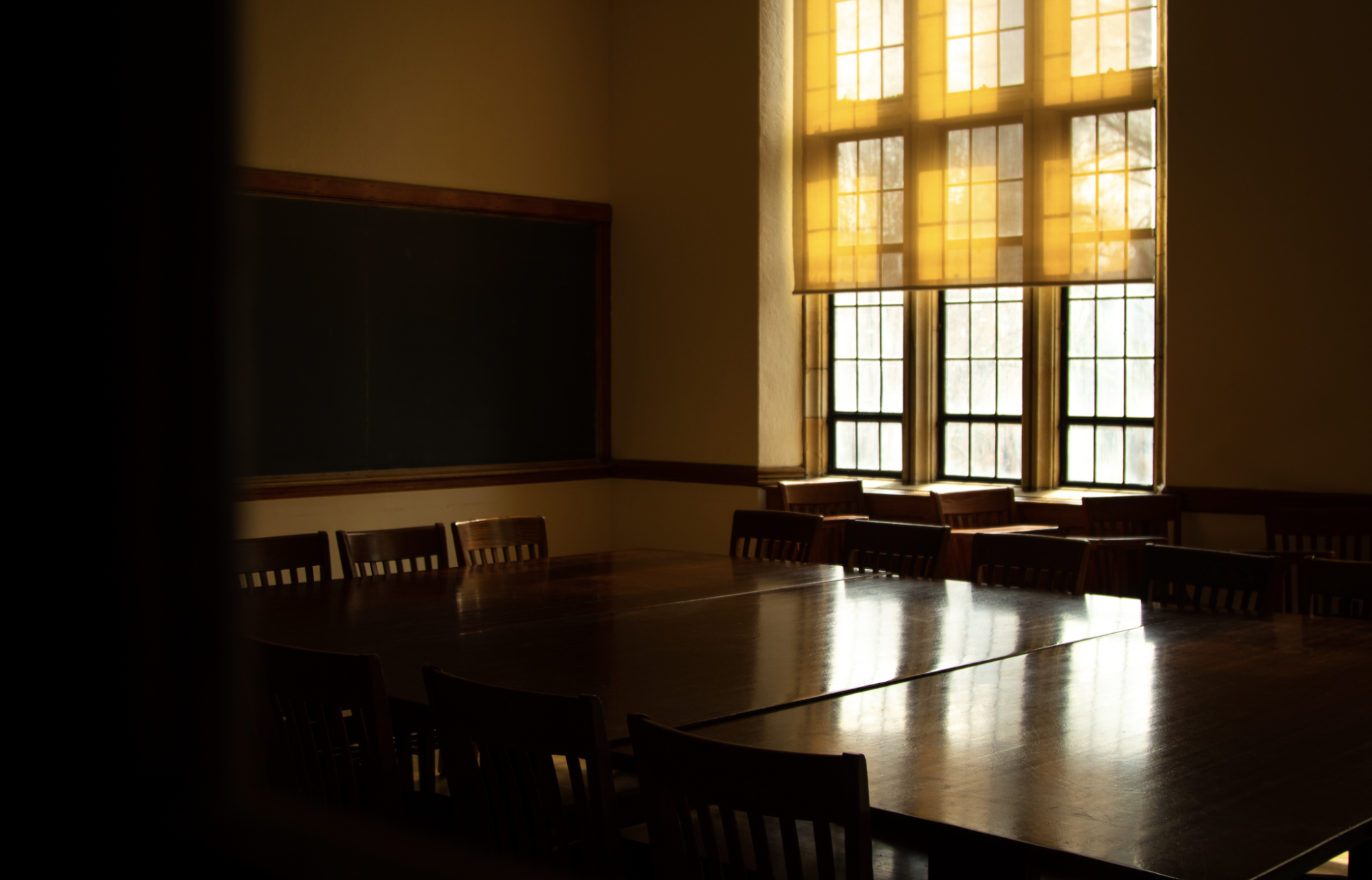
Marisa Peryer, Senior Photographer
From Zoom calls to Canvas assignments, Yale students are rapidly adapting to new modes of learning, while on the other side of the screen, teaching is simultaneously evolving and expanding. While many professors live close to Yale’s New Haven campus, some professors are using this opportunity to teach from cities and rural areas throughout the United States and abroad.
With in-person classes ending abruptly last spring, professors have been tasked with finding new ways to connect with their students online. From diverse locations, teaching virtually has been a challenge. Yet through creative thinking and thorough preparation, professors have been able to foster relationships with their students while taking advantage of their non-Yale surroundings.
“That whole process of teaching remotely, like shifting to that, it’s not easy,” said professor Erleen Hatfield, a lecturer at the Yale School of Architecture who is currently teaching from Manhattan. “You lose that sort of personal interaction with your students.”
Hatfield expressed that in her “Introduction to Structures” class, she is trying to keep her students as engaged as possible while reimagining the valuable in-person moments of her class. Instead of a site tour that would have otherwise been canceled, she is planning a virtual tour where her students will “walk around” with a contractor virtually through a construction site.
Recreating similar moments, many remote professors are actively using Zoom breakout rooms, one-on-one calls and special projects to strengthen and restore the class dynamic and energy hindered by the pandemic.
According to David Kastan, professor of English who is currently teaching “The Problem of Beauty” and “Shakespeare and Religion” from Long Island, the social distancing of students through online classes leads to a loss of energy in the classroom. Regardless of this, the desire of his students to be engaged has prompted him to innovate new solutions for fostering connections.
“For some kinds of classes the intellectual ‘content’ of the course remains much the same, though the intellectual ‘experience’ is flattened out,” Kastan said. “I have never worked harder in my life.”
Jane Tylus, professor of Italian and comparative literature, described a similar unidirectionality of online classes and the difficulties in stimulating conversation between her students.
Earlier this year, Tylus was on a sabbatical in Italy, deciding to return home to Vermont when the virus turned it into a “Zona Rosa,” or the “Red Zone.” Although her experience abroad was cut short, she is now enjoying her work from Vermont, especially because of its close correlation with the subject matter she is instructing in her “Early Modern Ecologies” classes.
“The one good thing about teaching a course on early modern ecologies and thinking about environment and nature and farming and all that is that I’m in the middle of all that,” Tylus said. “I literally just walk out my door [and] you’re right there.”
Tylus, Hatfield and others noted that the increase in accessibility and portability that online and Zoom classes provide are some of the most positive aspects of this semester’s mode of teaching. As Tylus looks forward to beginning classes outdoors and in-person in a reserved tent on campus next week, Kirsten and Casey Guynes, American Sign Language lectors at both Yale and Florida State University, are excited to continue teaching from Alligator Point, Florida.
Unlike many of Yale’s professors who have had to adapt to teaching remotely for the first time this year, the Guynes’ have been instructing ASL online for several years. Although they experience obstacles in teaching sign virtually, for example in fingerspelling, the online element of classes this year made it possible for both of them to teach ASL to Yalies while still teaching full time at FSU.
“It definitely gave us a new opportunity,” Kirsten Guynes said. “Because we already had online ESL teaching experience, we thought, we’ll give it a try.”
Although the limitations posed by the pandemic and the restriction of gatherings have created many obstacles and challenges for professors throughout Yale and other universities across the country, online classes have caused a shift in perspective and how professors view the interaction of teaching and learning in general.
Aníbal González-Pérez, director of graduate studies and professor of Spanish, taught at the Middlebury College Spanish Language School over the summer remotely from Puerto Rico and now teaches his Yale classes from Hamden. Although he acknowledged the inconveniences of online teaching, from electrical power outages to the difficulties in nonverbal communication — essential in teaching foreign language — he reflected on the special phenomenon students and professors are experiencing, as well as emphasizing the significance of in-person learning.
“I feel so amazed at the very fact that we’re all in vastly different spaces,” González-Pérez said. “It’s made me reflect much more on how I teach in the everyday classroom when I’m physically present … I’ll be, I think, more aware of my surroundings and how we interact.”
Yale College classes began on Aug. 31 and will end online in early December.
Amelia Lower | amelia.lower@yale.edu







